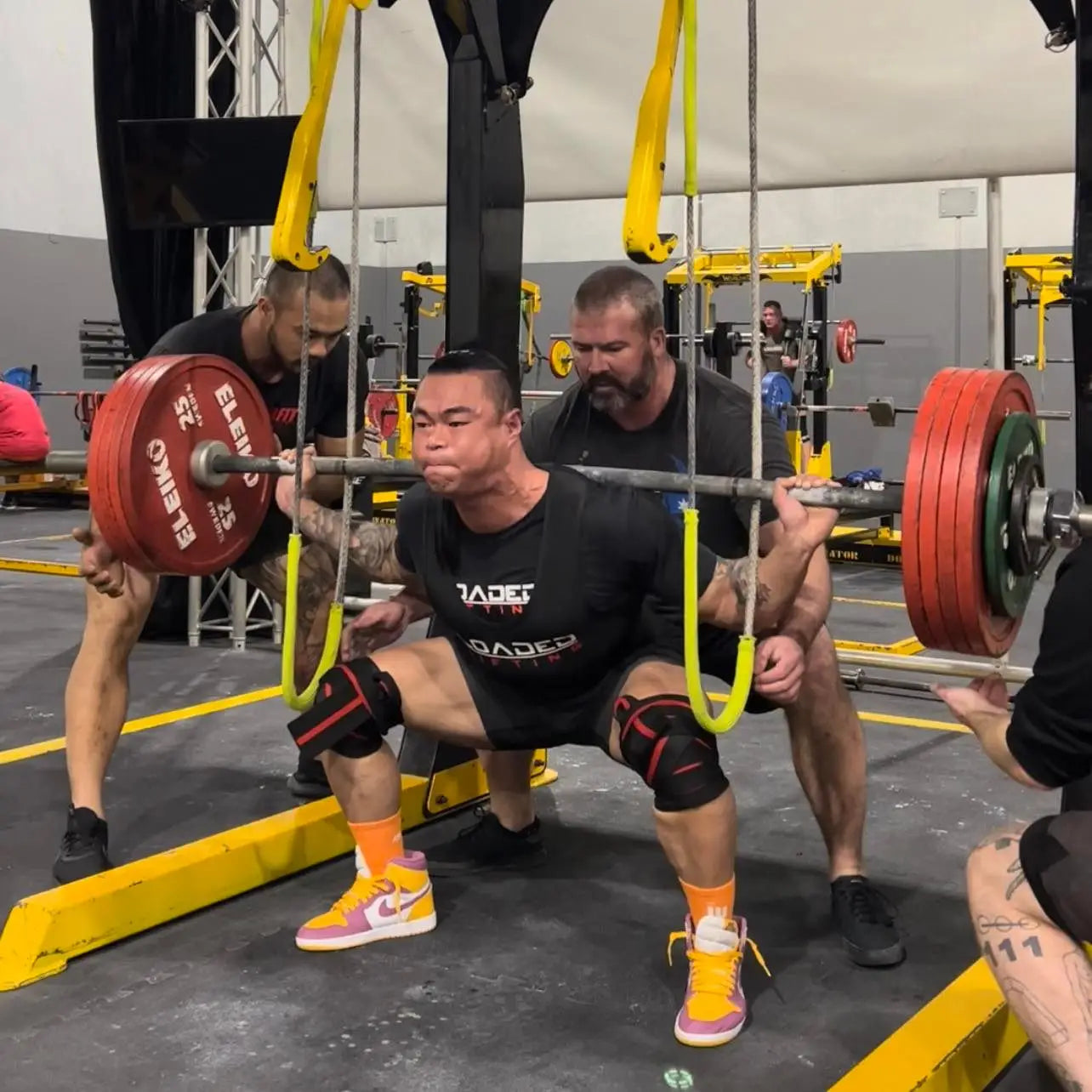Loaded Blog
The muscle that may save or squat (and hips)
Over the last few years, many of us that were wider low bar squatters have had hip issues. Squats are the king of movements, but there is a possibility that the way we do it doesn't evenly build your body (we're being sarcastic, it doesn't).
Quick review of the Squat
There is no anatomical or physiological reason powerlifting chose parallel (hip crease below the knee) for a full squat. Its completely arbitrary, and for a lot of people, it feels fine and dandy. Below is a legal squat - many people don't understand it relies on the creases of the body.

Really big people with big quads will have the upper part of their thigh way above parallel. Diagram C is what many people think is parallel, but diagram B notes the hip crease, this squat is actually sunk.

For a small majority of people with shallow hip sockets (hip dysplasia) parallel will have your hips pulling apart and ATG may be agony.
How people choose a squat style
Almost all people that come into powerlifting as a adult aren't going to squat in a manner best for their body development, but will instead use a position that moves the most weight. This means for lots of people, their back will be way stronger than their quads, so a hip back good morning style moves the most.
A longer term view
Without a doubt, we advise you to try many squat variations, and even if you squat low bar hip back - to consider some high bar with the knees driving forward. Consider going to a depth that is the end of your natural range (even if its a accessory).
Many muscles of the hip are used below parallel, and we may be putting them in a super precarious position by making ourselves very strong above parallel, but not below.
Powerlifters are often plagued with anterior pelvic tilt (ie, lower back is curved to make your but stick out and it makes your belly point down). There is lots of evidence this does not lower your performance, but it for sure looks bad. It also causes butt wink below parallel or high bar (which ends up being the excuse for never doing high bar).
Combine the always sitting culture, training the posterior chain twice over with low bar and deadlifts, likely not doing lunges, step ups or quad dominant work, and you have a long term future with a super powerful back/glutes and tiny quads with no VMO (the teardrop).

The possibility of injury
The hip complex is annoyingly complex. See below. We've seen lots of people that think they have very tight hip flexors, but its the Sartorius that is pulling on their hips.

The Sartorius get so annoying tight with low bars and deadlifts. This is the muscle you feel stretching during the frog stretch and its the one that pulls your heel toward your knee when seated or your knee out to the side when standing.
Many seasoned powerlifters would typically reach down and pull their leg up to put shoes/socks on (up until a few years ago, I didn't even realise that anybody could put their heel on their knee just using musculature).
Why you should care
This muscles works in conjunction with the hip flexors, and is trained in running, jumping and sprinting. Not many powerlifters are running, jumping or sprinting.
Its often very tight, and confused with the hip flexor. Trainers will keep stretching their hip flexors and remain super tight during a squat.
To be really obvious, having a muscle that is tight will mess up your squat. Having a muscle that is weak may cause injury.
Why its super easy to fix
Its a few sets of sliding your heel up your opposite leg during the warm up for the squat. It feels nice, and actually helps you get into position a little better.
You may strongly consider this if you (like I was previously) unable to hip depth until their is a few plates on the bar (cannot believe I was proud of that).
After many years of being tight, my Sartorius snapped (just a grade 1 tear) when I was free falling a warmup squat to try and get depth. It actually took many months to fix, and the first few months the pain was incredible. Don't do that.
Its literally a 20 second test to see if yours is week, and a few minutes during each squat warmup.


